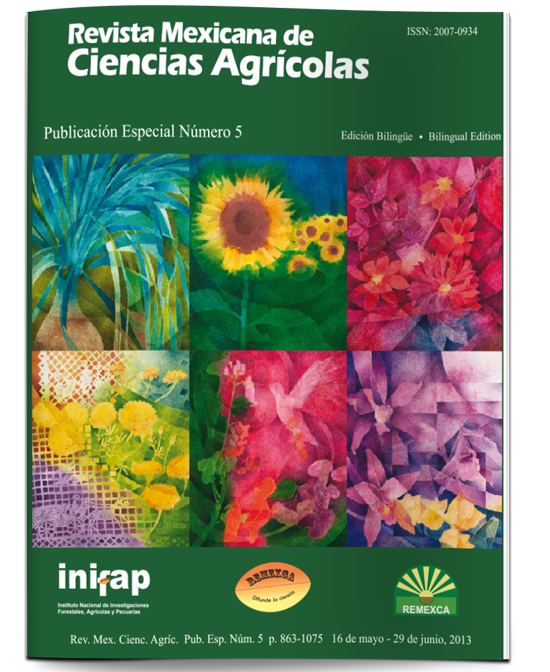Foliar penetration routes for fertilizing the Orchid Cymbidium sp. (Orchidaceae)
DOI:
https://doi.org/10.29312/remexca.v0i5.1298Keywords:
Cymbidium sp., Orchid, pseudobulbsAbstract
The objectives of this study were to characterize the leaf anatomy and identify the routes of penetration of a foliar fertilizer 10-10-10 (NPK) on the Orchid (Cymbidium sp.), a species with high profitable potential for its high prices as a pot and cutting f lower. Considering the plant ́s morphological characteristics, to precise the nutrient absorption sites concede to optimize the technique and the inputs to be applied. Foliar applications and histological sections were conducted in the laboratory of Plant Histopathology of the Postgraduate College inAgricultural Sciences, Campus Montecillo, during themonthsApriltoAugust,2012.Thethicknessofthecuticle along the leaf was not even; in the middle portion was thicker (29.90 μm) than in the apical (26.91 μm) and basal portions (25.75 μm). The number of stomata throughout the leaf was uniform. In the middle region of the leaf, the epidermal tissue thickness (63 045 μm), the diameter of the subepidermal fiberbundles(184.55μm)showedthehighestvalues,while the larger diameter of the vascular bundle (1 031 μm) and the thicker mesophyll (3 777.91 μm) occurred in the basal portion of the leaves. The route of penetration of the foliar fertilizer was via cuticular and stomatal from 30 min after making the application and 120 min later it was visually observed in the pseudobulbs, suggesting that the fertilizer f lows into this area preventing loss. These results indicate that foliar feeding is a viable alternative that can be implemented in this ornamental production.
Downloads
Downloads
Published
How to Cite
Issue
Section
License
The authors who publish in Revista Mexicana de Ciencias Agrícolas accept the following conditions:
In accordance with copyright laws, Revista Mexicana de Ciencias Agrícolas recognizes and respects the authors’ moral right and ownership of property rights which will be transferred to the journal for dissemination in open access. Invariably, all the authors have to sign a letter of transfer of property rights and of originality of the article to Instituto Nacional de Investigaciones Forestales, Agrícolas y Pecuarias (INIFAP) [National Institute of Forestry, Agricultural and Livestock Research]. The author(s) must pay a fee for the reception of articles before proceeding to editorial review.
All the texts published by Revista Mexicana de Ciencias Agrícolas —with no exception— are distributed under a Creative Commons License Attribution-NonCommercial 4.0 International (CC BY-NC 4.0), which allows third parties to use the publication as long as the work’s authorship and its first publication in this journal are mentioned.
The author(s) can enter into independent and additional contractual agreements for the nonexclusive distribution of the version of the article published in Revista Mexicana de Ciencias Agrícolas (for example include it into an institutional repository or publish it in a book) as long as it is clearly and explicitly indicated that the work was published for the first time in Revista Mexicana de Ciencias Agrícolas.
For all the above, the authors shall send the Letter-transfer of Property Rights for the first publication duly filled in and signed by the author(s). This form must be sent as a PDF file to: revista_atm@yahoo.com.mx; cienciasagricola@inifap.gob.mx; remexca2017@gmail.
This work is licensed under a Creative Commons Attribution-Noncommercial 4.0 International license.



